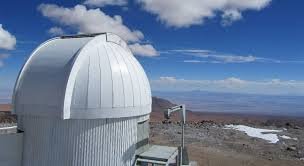World’s Highest Observatory Inaugurated in Chile by University of Tokyo
Introduction to the Observatory
The University of Tokyo has inaugurated the Atacama Observatory (TAO) in Chile, officially recognized as the highest observatory in the world by Guinness World Records. Situated at an astounding 5,640 meters above sea level on Cerro Chajnantor in the Antofagasta Region, TAO represents a pinnacle of human achievement in astronomical research.
Cutting-edge 6.5-meter Optical-Infrared Telescope
At the core of TAO is a 6.5-meter optical-infrared telescope. This state-of-the-art instrument is designed to delve into the mysteries of the cosmos, offering unprecedented insights into the universe’s fundamental nature. Its advanced capabilities will significantly enhance our understanding of astronomical phenomena.
Exceptional Location for Astronomical Observation
The location of TAO on Cerro Chajnantor was strategically chosen for its superior atmospheric conditions. The minimal water vapor at this high altitude allows for exceptional clarity in observing mid-infrared wavelengths, which are usually absorbed at lower elevations, providing an unparalleled observational advantage.
Overcoming High-Altitude Construction Challenges
The construction of TAO was a monumental task that took 26 years of meticulous planning and execution. The project’s director, Takashi Miyata, highlighted the technical and political challenges encountered. The extreme altitude and harsh conditions required innovative solutions and collaboration across various fields.
Ensuring Safety Against Altitude Sickness
To mitigate the risks of altitude sickness for workers and astronomers, especially during nighttime operations, a base facility was established in San Pedro de Atacama, around 50 kilometers from the summit. This facility supports remote telescope operation, ensuring the safety and well-being of the personnel.
Proximity to ALMA for Collaborative Research
TAO is located near the ALMA (Atacama Large Millimeter/submillimeter Array) radio telescope, fostering a collaborative hub for international astronomical research. This proximity enhances cooperation and synergy among global scientific communities, paving the way for groundbreaking discoveries.
Conclusion
The inauguration of TAO by the University of Tokyo marks a significant milestone in astronomical exploration. This advanced observatory is set to play a crucial role in expanding our knowledge of the universe, contributing to numerous scientific breakthroughs in the years to come.

Why This News is Important
Advancement in Astronomical Research
The inauguration of the TAO represents a significant advancement in astronomical research. This observatory’s unique capabilities and strategic location offer new opportunities for discovering and understanding the universe’s fundamental aspects.
Technological Innovation
The TAO’s cutting-edge 6.5-meter optical-infrared telescope showcases the latest technological innovations in astronomy. It reflects the continuous efforts to push the boundaries of what is possible in scientific research, providing a powerful tool for astronomers worldwide.
Collaborative Efforts
The proximity of TAO to the ALMA observatory highlights the importance of international collaboration in scientific research. This synergy fosters a global community of scientists working together to achieve common goals and share knowledge, leading to more comprehensive and impactful discoveries.
Educational Impact
For students and researchers preparing for government exams in various fields, understanding the significance of TAO is crucial. It exemplifies the application of scientific principles and engineering solutions in real-world scenarios, serving as an inspirational case study.
Strategic Importance for Chile
The establishment of the TAO in Chile underscores the country’s strategic importance in global astronomical research. This enhances Chile’s position as a leading location for astronomical observations, attracting more scientific projects and investments to the region.
Historical Context
Development of High-Altitude Observatories
The concept of high-altitude observatories dates back to the early 20th century when scientists realized that higher altitudes offered clearer skies and better viewing conditions. Over the decades, several observatories have been built in remote, high-altitude locations to take advantage of these conditions.
Evolution of Astronomical Instruments
The development of astronomical instruments has evolved significantly, from simple telescopes to sophisticated optical-infrared systems. Each advancement has enabled astronomers to observe the universe in greater detail, leading to numerous groundbreaking discoveries.
Significance of the Atacama Desert
The Atacama Desert in Chile is renowned for its exceptional conditions for astronomical observations. It is home to several world-class observatories, including ALMA and now TAO. The region’s clear skies and minimal atmospheric interference make it an ideal location for high-precision astronomical research.
Key Takeaways from World’s Highest Observatory Inaugurated in Chile
| Serial Number | Key Takeaway |
|---|---|
| 1 | TAO is the highest observatory in the world, located at 5,640 meters above sea level in Chile. |
| 2 | It features a 6.5-meter optical-infrared telescope for advanced astronomical research. |
| 3 | The observatory’s location offers exceptional atmospheric conditions for mid-infrared observations. |
| 4 | The project overcame significant technical and political challenges over 26 years of construction. |
| 5 | TAO’s proximity to ALMA fosters international collaboration in astronomical research. |
Important FAQs for Students from this News
What is the Atacama Observatory (TAO)?
The Atacama Observatory (TAO) is the highest observatory in the world, located at 5,640 meters above sea level in Chile. It is equipped with a 6.5-meter optical-infrared telescope for advanced astronomical research.
Why was TAO built in the Atacama Desert?
The Atacama Desert offers exceptional atmospheric conditions for astronomical observations, including minimal water vapor and clear skies, which are ideal for mid-infrared observations.
What makes the 6.5-meter optical-infrared telescope special?
This telescope is capable of observing mid-infrared wavelengths with high clarity, providing detailed insights into astronomical phenomena that are not possible with telescopes located at lower altitudes.
How long did it take to construct TAO?
The construction of TAO took 26 years, involving meticulous planning and overcoming various technical and political challenges.
What is the significance of TAO’s proximity to the ALMA observatory?
The proximity to ALMA fosters international collaboration in astronomical research, enhancing the synergy between different scientific communities and facilitating groundbreaking discoveries.
Some Important Current Affairs Links













